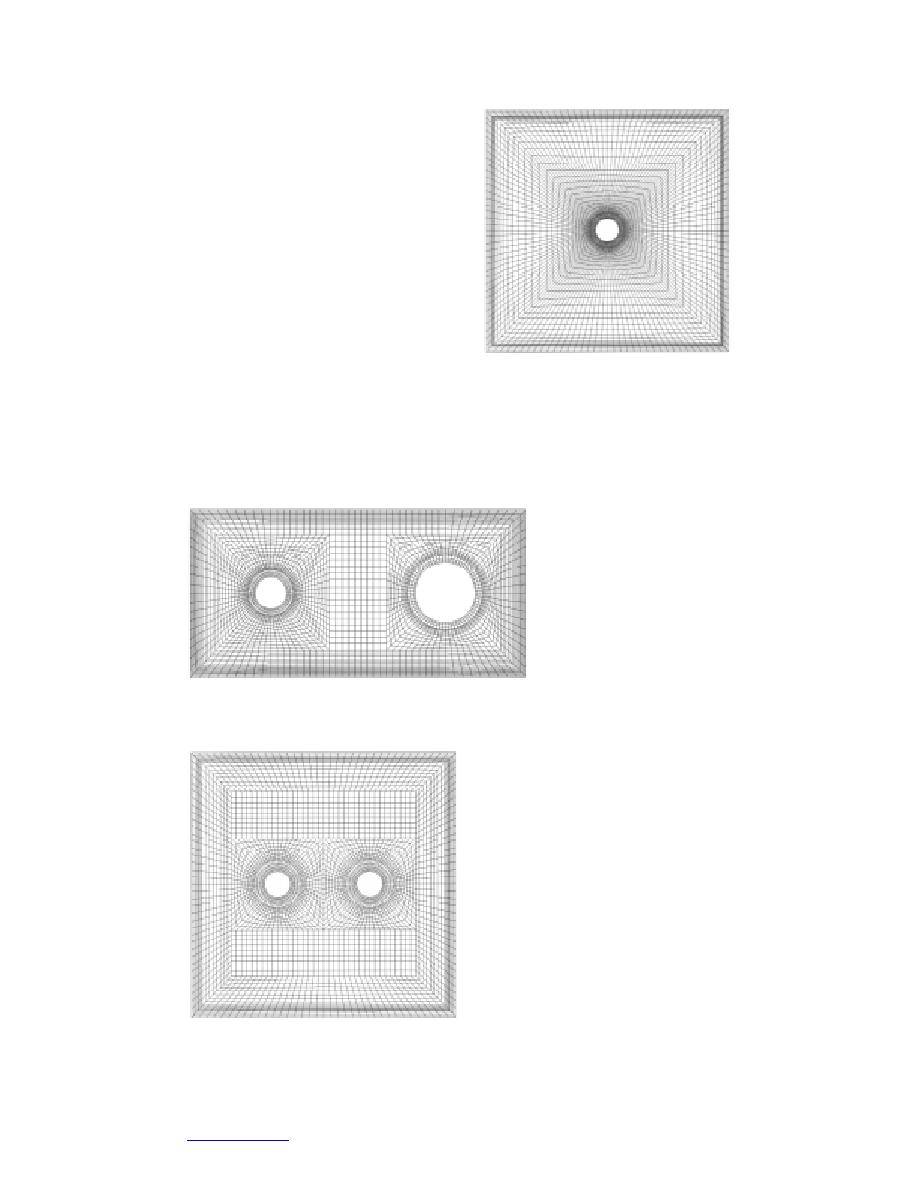
an initial solution estimate, aided the
m o d e l in converging to a solution.
Towards the end of this study it was found
that often FECOME converged to an
oscillatory solution, which may actually
occur in steady solutions. The tempera-
tures were generally within or close to the
convergence criteria, while the maximum
velocity and pressure changes were small
(23%). In Appendix B, the solutions that
were oscillating are indicated with an
asterisk in the file name.
The effect of mesh density was investi-
gated and reported in Richmond (1997). In Figure 27. Mesh for the 2-ft 2-ft enclo-
general, it was found that mesh density sure with a 2-in. insulated pipe (16,704
had little effect on average values, but nodes, 5,972 elements, 48,862 d.o.f.).
denser meshes were required to obtain
solutions at higher Rayleigh numbers. The meshes generated for all of the 1-ft square
enclosure configurations are similar to Figure 26, as is the mesh for the 1.27-ft
1.27-ft enclosure. Meshes for the other configurations are shown below (Fig. 27
29). A limited number of
solutions were obtained for
the 2-ft 2-ft enclosure with
two pipes but none for the
2-ft 4-ft enclosure. The rea-
son for this is not clear, as
these meshes are as dense as
those used for the 1-ft 1-ft
e n c l o s u re s . Attempts to
solve these configurations
Figure 28. Mesh for the 2-ft 4-ft enclosure, 4-in. and required large quantities of
8-in. insulated pipes (13,338 nodes, 4,356 elements,
memory and cpu time. It
38,834 d.o.f.).
appears that the solution
methods used by FECOME may not be
optimal for these large-scale problems.
Occasionally reports have been made in
the literature regarding difficulties in
obtaining solutions to high (107) Ray-
leigh number problems, but there has
been no indication of the best way to
solve this problem.
Figures 3033 display the numerical
data in Ra-Nu number format; dashed
lines connect data obtained with the
same pipe temperatures (values of 250,
150, 100, 80, and 40F). Data are also
shown for the conditions where no
elements, 42,188 d.o.f.).
sivities are designated as follows:
36
Go to Contents



 Previous Page
Previous Page
